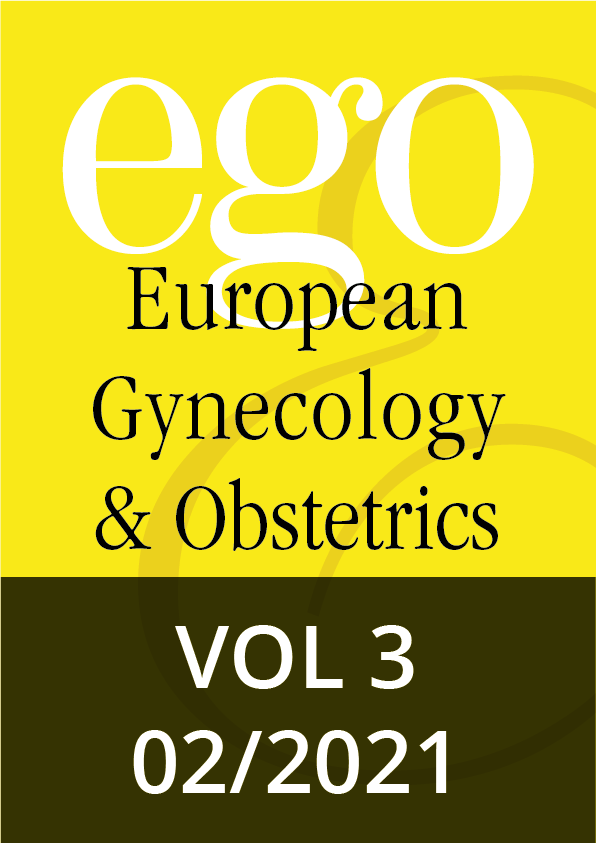Short reviews, 060–062 | DOI: 10.53260/EGO.213021
Systematic review, 063–071 | DOI: 10.53260/EGO.213022
Case reports, 072–075 | DOI: 10.53260/EGO.213023
Case reports, 076–078 | DOI: 10.53260/EGO.213024
Case reports, 079–081 | DOI: 10.53260/EGO.213025
Case reports, 082–085 | DOI: 10.53260/EGO.213026
Original articles, 086–090 | DOI: 10.53260/EGO.213027
Original articles, 091–095 | DOI: 10.53260/EGO.213028
Original articles, 096–099 | DOI: 10.53260/EGO.213029
Original articles, 100–107 | DOI: 10.53260/EGO.2130210
Unicornuate uterus associated with retrosigmoid ovary and unilateral renal agenesis: a case report and a review of the literature
Abstract
Unicornuate uterus is a malformation characterized by the unilateral development of a single Müllerian duct during embryogenesis, while the contralateral part is either incompletely developed or absent. It can be associated with a symptomatic presentation, namely chronic cyclic pain, and with adverse reproductive and obstetric outcomes. Transvaginal ultrasound examination, sometimes requiring 3D imaging, is used to diagnose and classify this condition; further investigation may include magnetic resonance imaging (MRI). In this report, we present the case of a healthy 22-year-old woman reporting irregular menstrual cycles who underwent transvaginal ultrasound examination at our obstetrics and gynecology unit. Ultrasonography revealed a unicornuate uterus with absence of rudimentary horn and ipsilateral adnexa in the pelvis. MRI was requested, and showed the presence of a normal ovary located in an ectopic retrosigmoid location, and ipsilateral renal agenesis. These abnormalities may quite frequently occur in the presence of uterine malformations such as unicornuate uterus. A correct classification of such defects and the associated abnormalities is needed in order to be able to counsel patients about potential issues regarding fertility and preservation of renal function, and to discuss the possibility of medical or surgical management of symptoms or associated complications. Ultrasound examination could miss associated defects, and an MRI scan is often necessary to define the diagnosis.
Keywords: congenital abnormalities, magnetic resonance imaging., solitary kidney, ultrasonography, Uterus; ovary
Citation: Mariani L.,Mancarella M.,Cirillo S.,Biglia N., Unicornuate uterus associated with retrosigmoid ovary and unilateral renal agenesis: a case report and a review of the literature, EGO European Gynecology and Obstetrics (2021); 2021/02:072–075 doi: 10.53260/EGO.213023
Published: May 1, 2021
ISSUE 2021/02

Short reviews, 060–062 | DOI: 10.53260/EGO.213021
Systematic review, 063–071 | DOI: 10.53260/EGO.213022
Case reports, 072–075 | DOI: 10.53260/EGO.213023
Case reports, 076–078 | DOI: 10.53260/EGO.213024
Case reports, 079–081 | DOI: 10.53260/EGO.213025
Case reports, 082–085 | DOI: 10.53260/EGO.213026
Original articles, 086–090 | DOI: 10.53260/EGO.213027
Original articles, 091–095 | DOI: 10.53260/EGO.213028
Original articles, 096–099 | DOI: 10.53260/EGO.213029
Original articles, 100–107 | DOI: 10.53260/EGO.2130210
